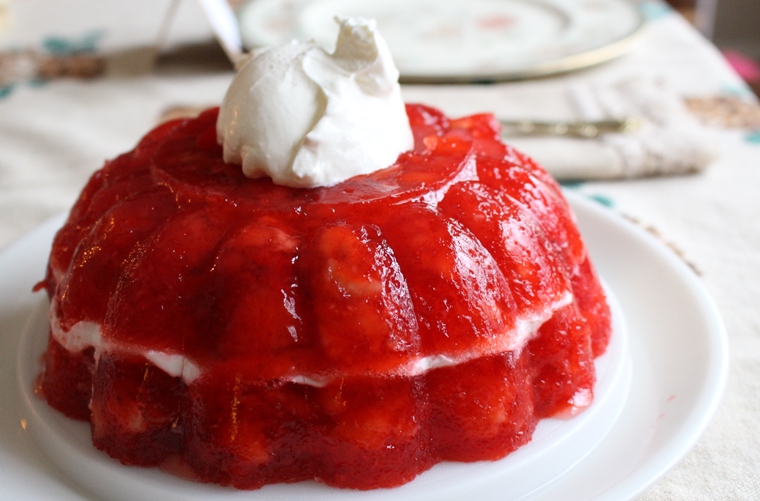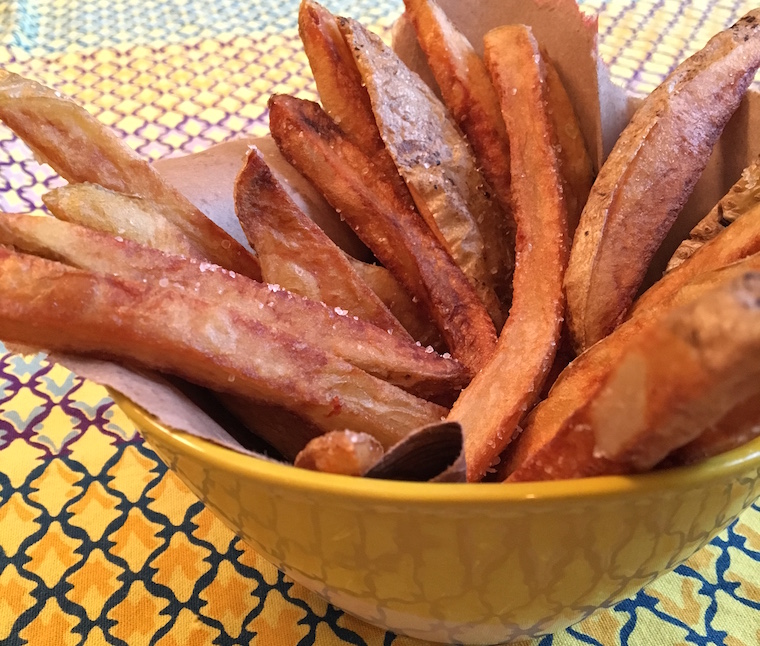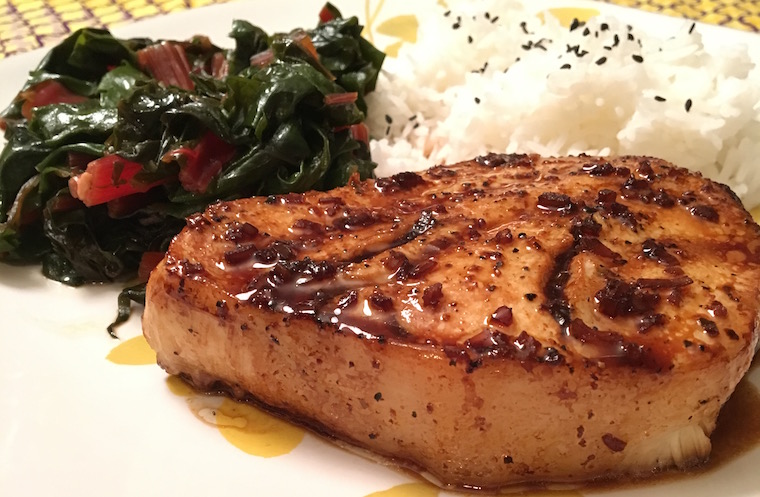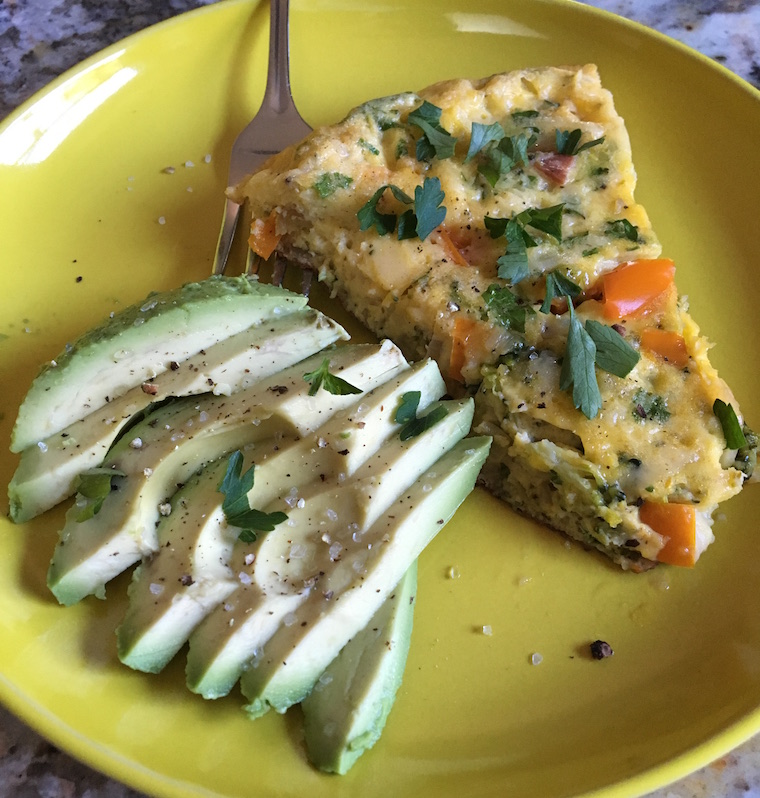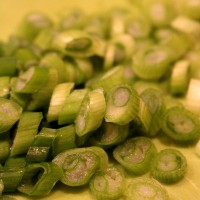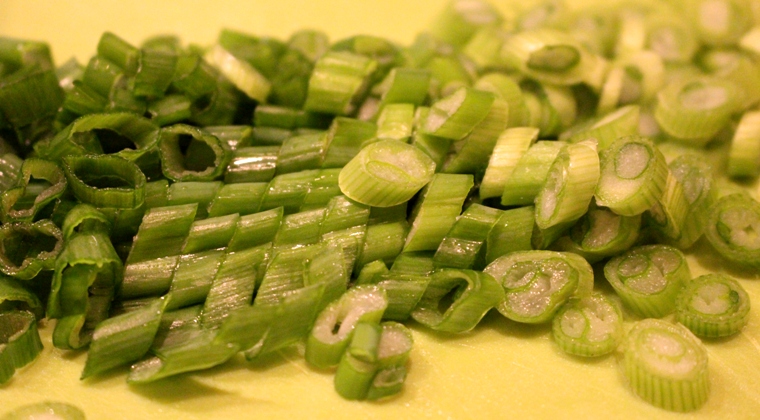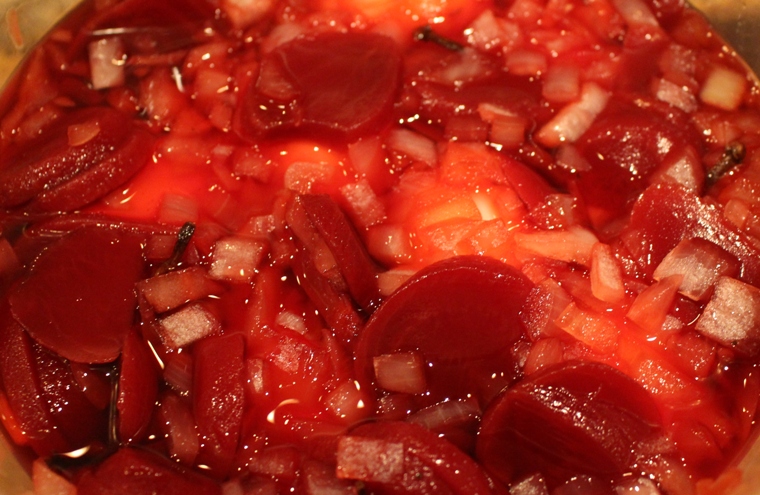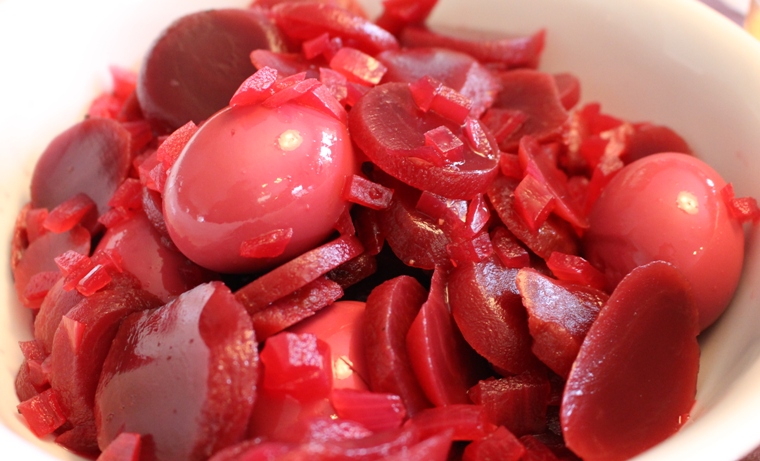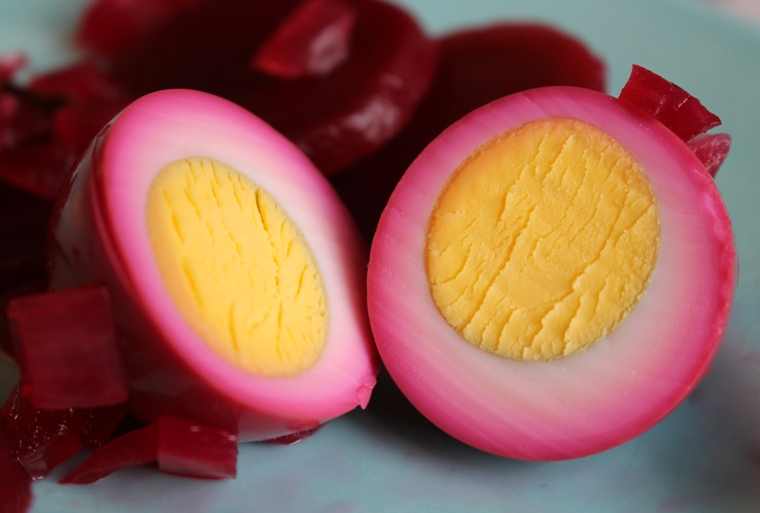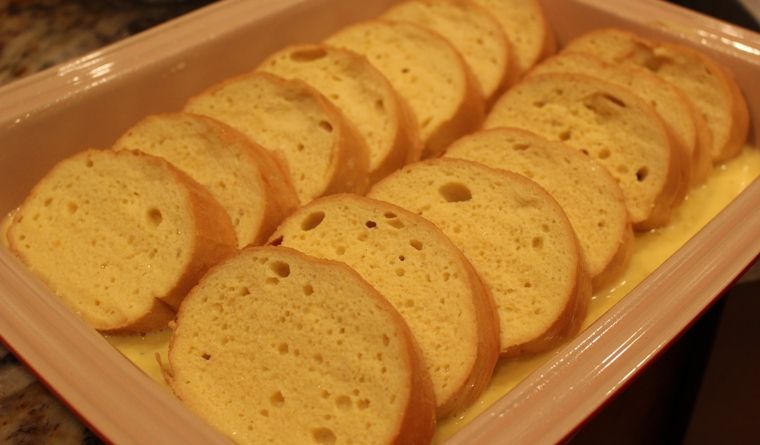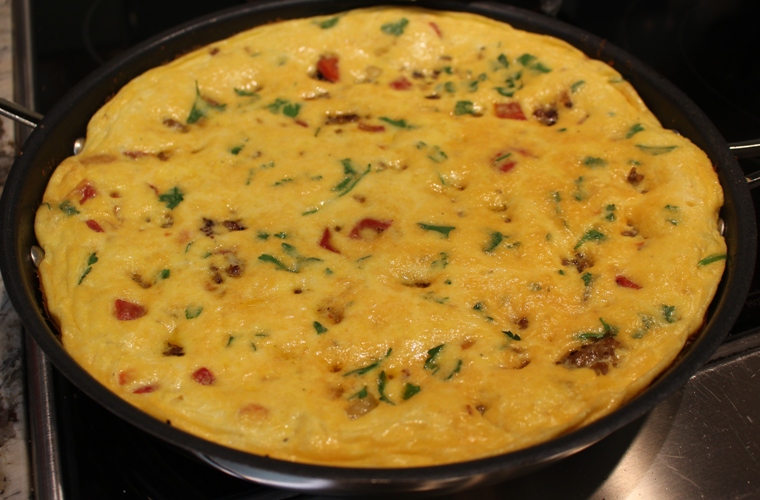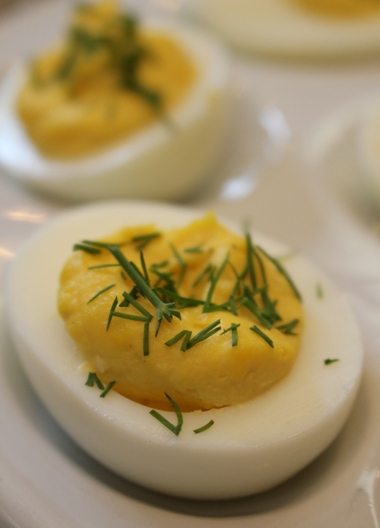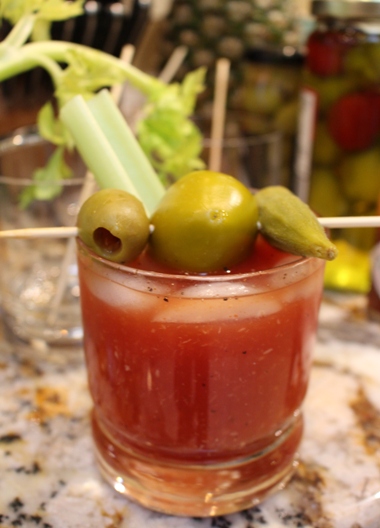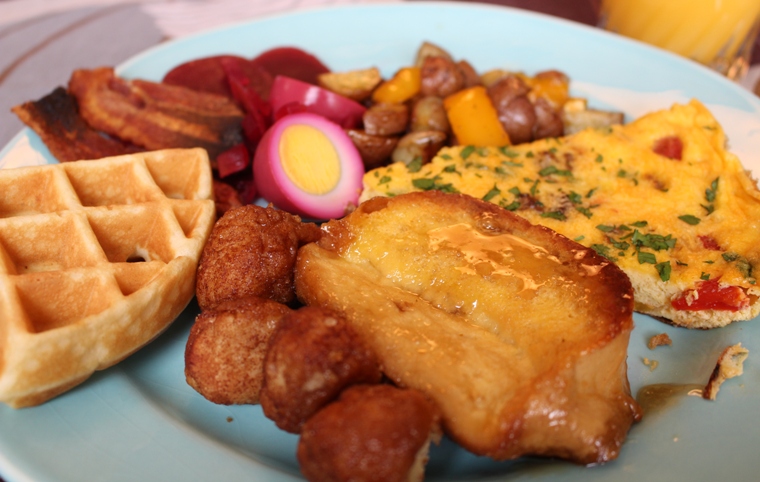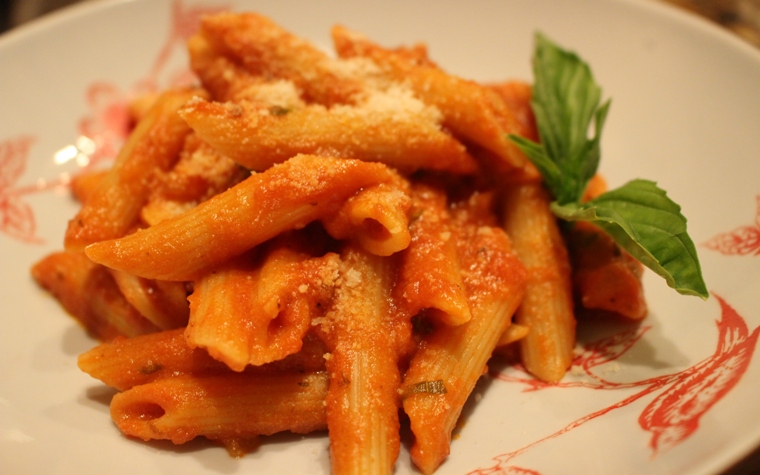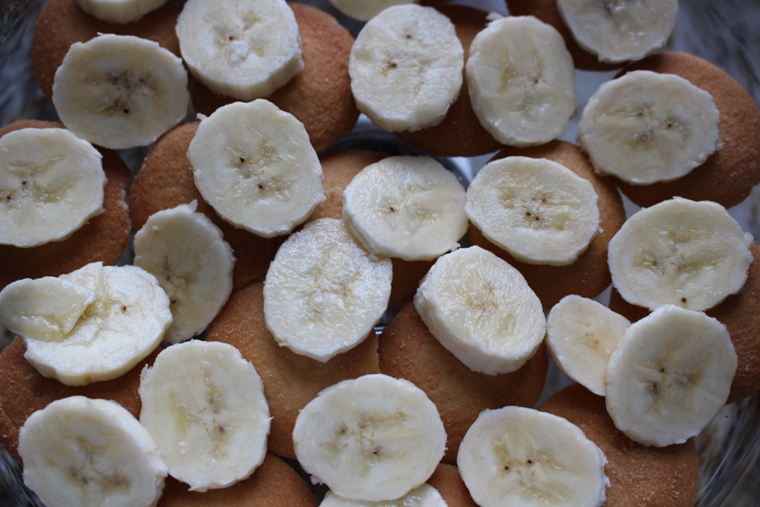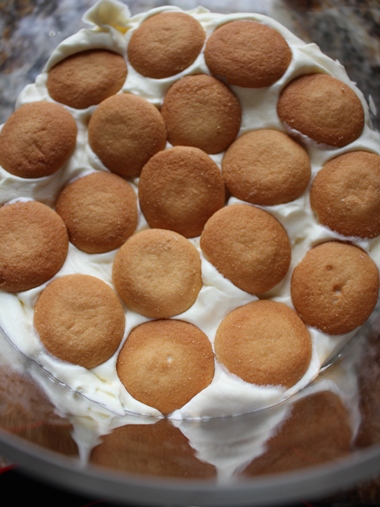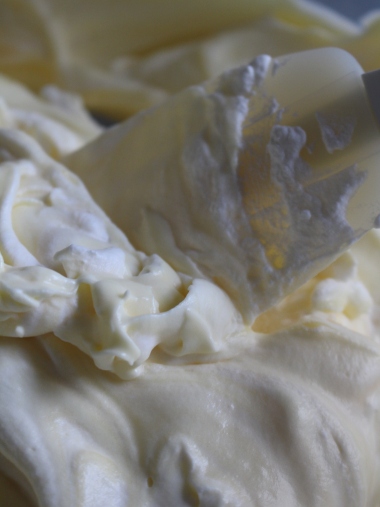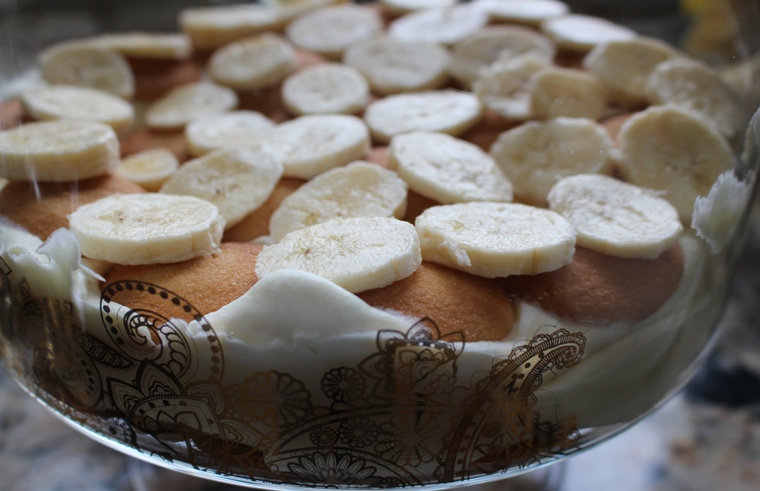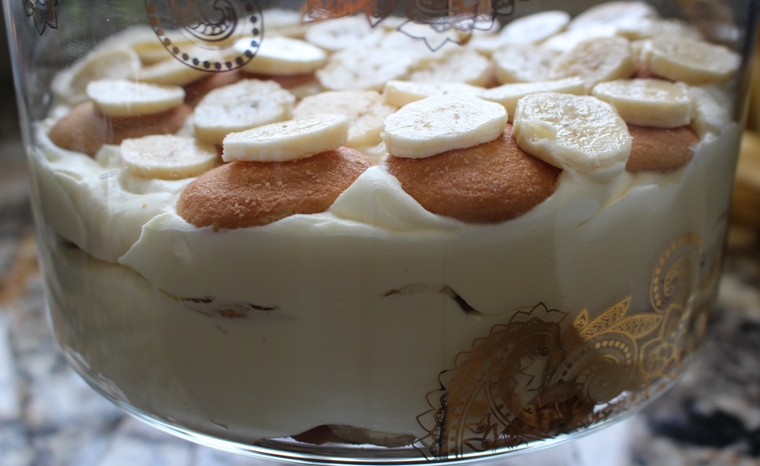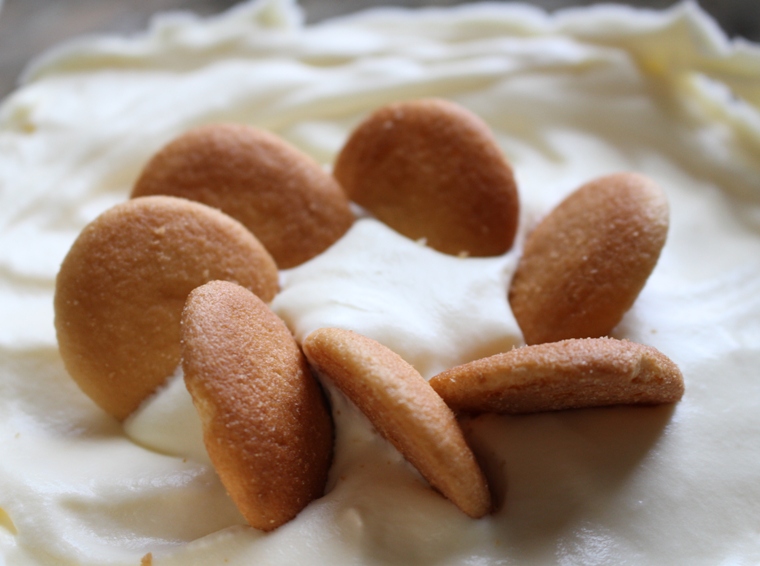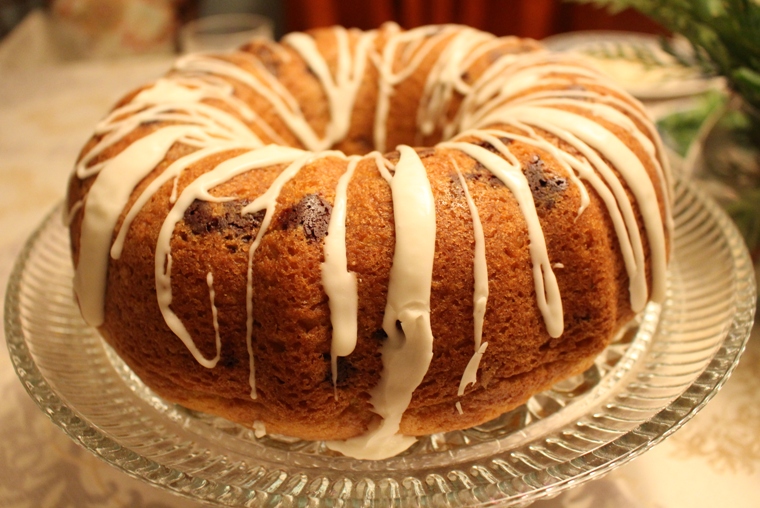Very few holiday traditions have remained intact from our childhood days at Suzie’s Victorian house on Locust Avenue. Thanksgiving and Christmas were always spent in that towering black and white home, while New Year’s Day was always at our house. In the last forty years, families have splintered, people have passed, and our holiday celebrations bear scant resemblance to those happier days. Still, there is one tradition I am hell-bent on keeping: the Ko Strawberry Jello Salad.
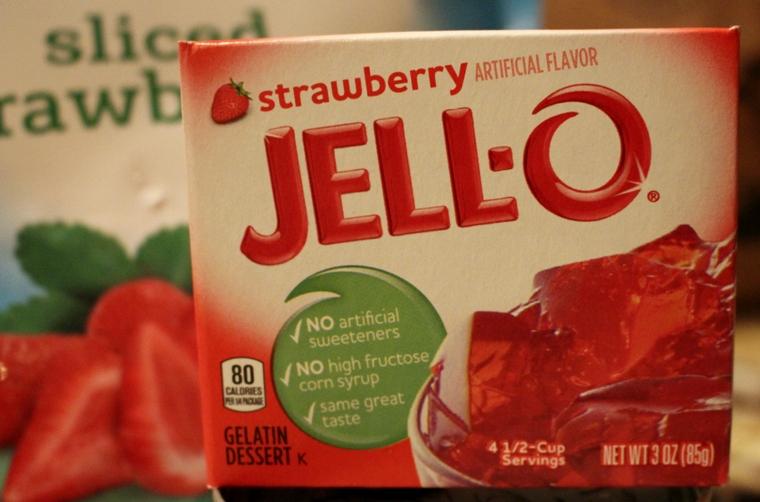
It begins, obviously, with that staple of American cuisine: JELLO. Unlike some kids, we never had much jello growing up. Every once in a while Mom would put together a bowl of the stuff, and we’d peer into the fridge as the gelatinous alchemy worked its semi-solidifying magic. But jello was mostly the stuff of school lunches, and since we brought our own we always missed out (not unhappily) on those little plastic cups of green, orange or red squares.
At holiday time, however, jello insidiously snuck into our Thanksgiving and Christmas traditions. It took the place of that other tradition – cranberries – in our amalgamation of American habits. (We also had ‘Green Beans Exotic’ in place of the more common green beans and onion dish.) It was a more adult version of jello salad, with some fruit suspended in it, and cut through with a layer of sour cream that lent it a fancy decorative kick, while also toning down the sweetness. I have to admit: it was never my favorite dish. But it was always there, and I always took a small spoonful of it out of obligation and habit. The striking red of it was the perfect accent to any proper holiday plate.
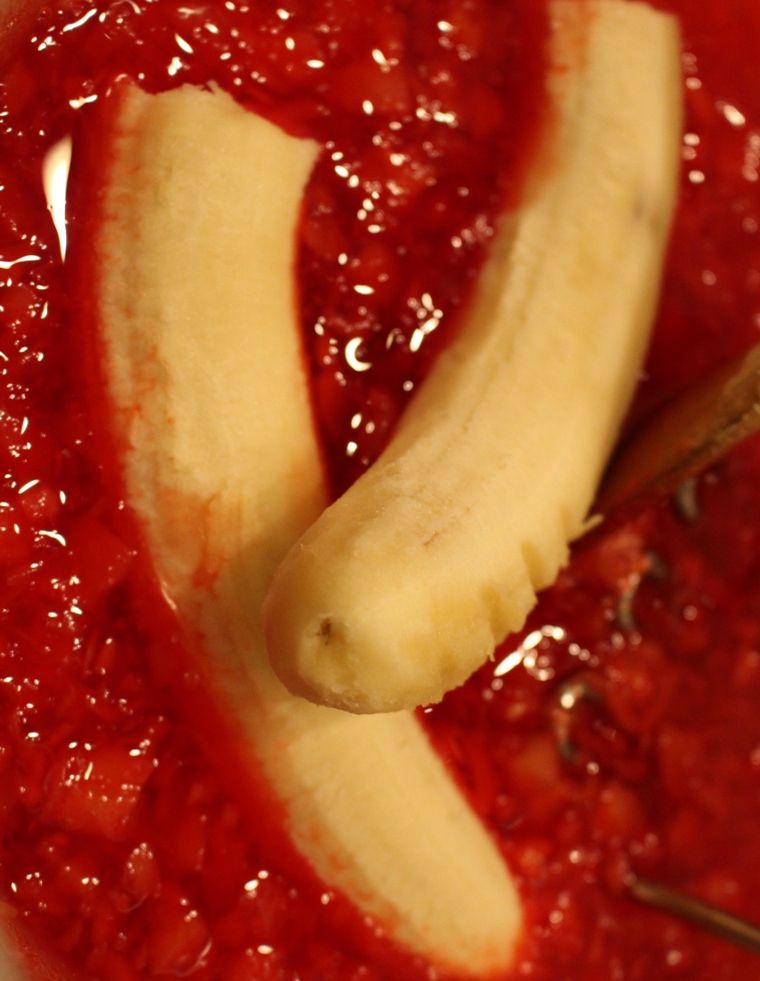
One year, in the early 2000’s, after Suzie’s Mom had moved out of the Victorian, we had a holiday gathering and there was no jello salad. The outcry was swift and vicious, and never again would we be without it. (I probably made the biggest stink, because in a world of change I was flailing, and doing my best to hang onto whatever little scraps of my more-or-less happy childhood I could.) The next year it was back, and would continue to be part of our holiday dinners until Elaine started spending the holidays in Florida. Therefore, we’ve been without it for a couple of years, but before giving it up, she gifted me a jello mold, and this was the year I tried my hand at crafting that most festive and garish of dishes.
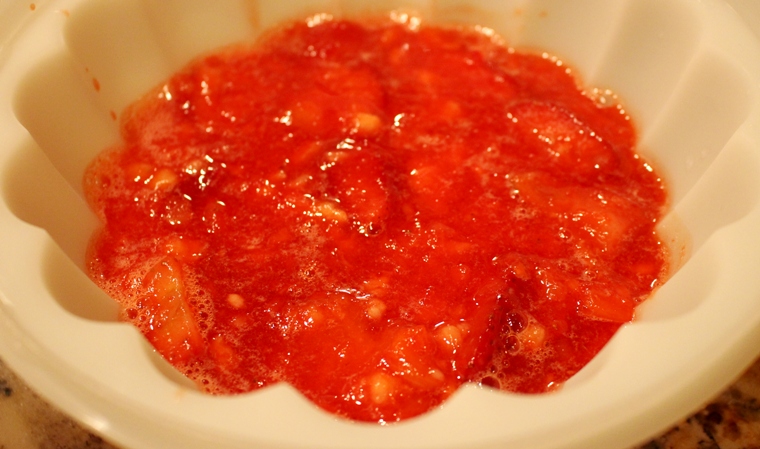
Along with strawberry jello, there are fresh bananas and pineapple in it, which adds some texture and bite, and while it won’t be winning any gourmet awards in the near or far future, I’ve actually come to enjoy the taste (in limited doses). That layer of sour cream makes all the difference in the world.
Far more than the taste, however, is the collection of memories associated with this simple dish. It’s an arsenal of happiness I keep close to my heart, of days when Suzie and my brother and I would roam the expansive floors of her home, dodging admonishing adults and troublesome older brothers, free from adult concerns and responsibilities. We never knew how wonderful we had it. Childhood comes with its own perils, I remember those well, but it also comes with a carefree freedom that we don’t realize until it’s long past.
That little dollop of red jello on my Thanksgiving plate reminds me of those times. And that’s why, even if 95% of it goes untouched, it’s still important for that jello mold to be there. Maybe one day far in the future, when I finally give up and give out on making it, they will miss it, stage their own rebellion, and take up the mantle of tradition.
